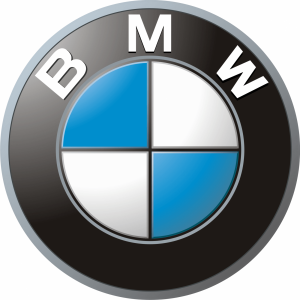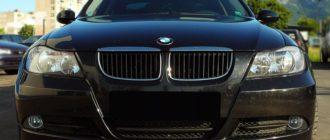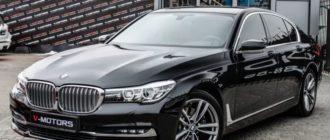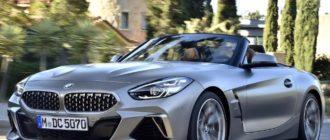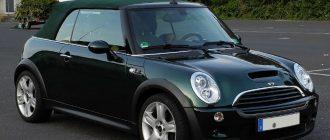The BMW X5 F15 model appeared in the last spring month of 2013. Fans were impressed by the first photos in winter. In August, the presentation of the hybrid versions of the BMW X5 eDrive took place at the Frankfurt Motor Show. The battery allows covering a distance of up to 30 km. Also, there are unique sporty variations with engines featuring twin turbos.
The predecessors of the BMW X5 F15 crossovers are the X5E70 models. The Bavarians decided not to complicate things with the technical equipment, leaving it almost the same. Since they grew on a common platform, with specific chassis features. However, some changes did affect certain details.
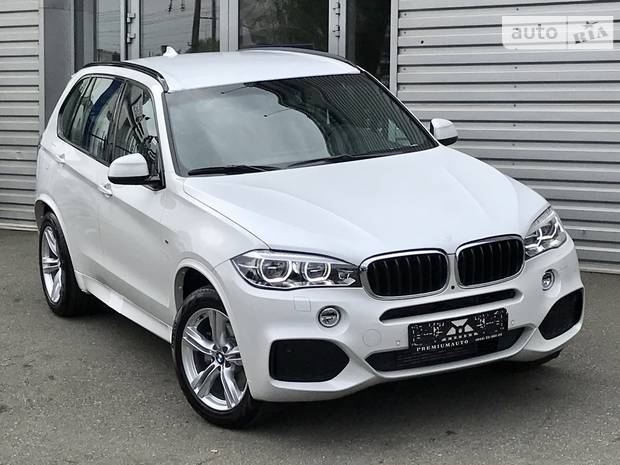
These are the sporty versions. They come with enhanced off-road capabilities. The cars have gained popularity.
Because they offer:
- a powerful appearance;
- a well-thought-out interior;
- versatility;
- a pleasant, comfortable driving experience;
- innovative technology;
- electronic equipment.
The cars are assembled at the Spartanburg plant. Sales started in 2013—2014. For our compatriots, the cars are assembled in Kaliningrad, at «Avtotor.»
Exterior of the BMW X5 F15
- The exterior of the BMW X5 F15 is modern and elegant. It is the signature style. However, the cars now exude a touch of femininity due to the introduction of smooth body lines.
- The precise proportions of the cars, belonging to the Sport Activity class, are evident in the slight overhangs at the front and elongated wheelbases.
- The chrome kidney grilles, divided into 2 parts, are centrally positioned.
- Below, there are grilles with mesh inserts.
- The base cars are equipped with cameras between the radiator grilles.
- On the sides, there are LED fog lights.
- The headlights are adaptive.
- During turns, dark sections of the road are visible thanks to the lights. Additionally, features like pedestrian recognition lighting are available.
- The cars feature the signature «angel eyes,» which serve as daytime running lights.
- The powerful lower parts of the front bumpers are not particularly expressive. The base kits include additional grids on the lower sides, housing sensors and detectors.
- Engineers have also designed openings in the bumpers to direct airflow towards the wheels.
- The high-performance variants do not have significant differences from the standard ones. The differences lie in the black radiator grilles of the BMW X5 F15 Performance, slightly modified bumpers, and different designs of rear-view mirrors.
- The body parts now come in black carbon color. Optionally, enhancement kits with M body kits, M performance exhausts, mud flaps, roof rails, wheel arch extenders can be installed.
- The hoods are borrowed from their predecessors. They have the same shapes and lines, exhibiting strictness and restraint like the radiator grilles.
- The crossovers have concave lines on the sides.
- Depending on the model and price, additional overlays for sills or steps can be installed in the cars. Owners comment that after numerous washes, the black window surrounds become dull, hence the preference for chromed ones due to their durability.
- The rear sections have changed in terms of aggressive taillights.
- The optics extend to the tailgate covers and body parts. The tailgate covers are divided into two parts, allowing opening upwards and downwards. Opening/closing the tailgates can also be done from the interior.
- The lower parts of the rear bumpers have also seen changes. Everything depends on the configurations. There are chrome exhaust pipes, 2 in each car, located there. Fog lights are horizontally positioned. Vertically — optional.
- The body parts come in 11 color variations, reflecting the premium class of crossovers. Optionally, cars can be equipped with moldings, sun visors, and sill covers.
- Standard cars come with 19-inch alloy wheels and 85-liter fuel tanks.
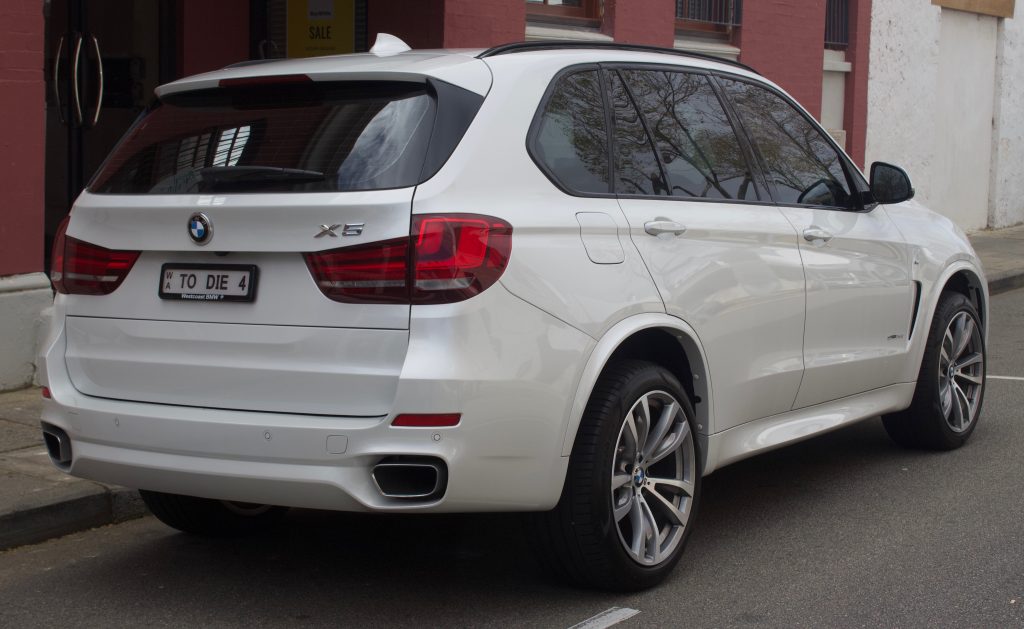
The parameters have not changed significantly:
- Length — 4.886 m.
- Width — 1.938 m.
- Height — 1.762 m (slightly reduced).
- Wheelbase — 2.933 m.
- Weight — 2885 kg (reduced due to lightweight metals).
- Aerodynamic balance — 0.31.
- Ground clearance — 20.9 cm.
The cars are mid-sized, suitable for city driving and highways with light off-road capabilities.
In 2016, car enthusiasts got hybrid versions of the BMW X5 eDrive. They come with additional hatches for charging electric motors.
Owners have pointed out important observations regarding the small viewing angle of the side mirrors for rear visibility.
BMW X5 F15 Bumpers
They exude aggressiveness due to the large intake forms. Consequently, the cars have an enticing appearance. Moreover, the vehicles, thanks to the bumpers, offer optimal cooling for working fluids and engine components. The bumpers, with conventional round fog lights, ensure good illumination, especially in areas with poor visibility.
Lighting
The headlights are equipped with adaptive mechanisms and LED devices. Hence, maneuvering through dark road sections becomes easy. Thanks to pedestrian recognition options, the cars are maximally safe.
Hoods
They have remained almost the same as the previous version. The lines are unchanged. The two protrusions at the front have improved aerodynamic characteristics. This has positively affected the coefficients of frontal resistance in oncoming airflow.
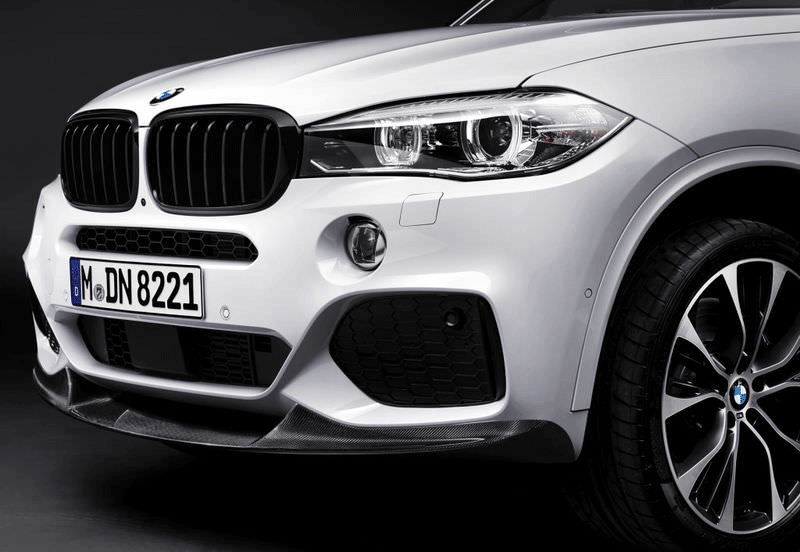
Let's talk about the Interior
- There have been some minor changes in the interior. Designers have opted for touch, non-retractable, multimedia screens in the cars, mounted higher than the panels. They have been enlarged to 10.25 inches. They are compatible with android devices and Car Play.
- The updated instrument clusters retain their previous positions. Below the screens, there are openings for airflows, vents, emergency buttons, and multimedia device launches in the cars. Further down in the cars, there are climate control blocks.
- Beneath them, there are audio systems with four quality speakers in standard configurations.
- In contrast to the previous models, the current ones lack panels with button controls for seat heating and fuel tank lid opening. They are now placed next to the transmission levers. Here are also electromechanical handbrakes, suspension control units with sport and comfort modes, and multimedia controls.
- Behind the gear levers, there are convenient armrests in the cars equipped with various devices. For example, in expensive versions, the armrests feature built-in mini refrigerators and cup holders with heating and cooling functions. They also have buttons that open the cargo compartments.
- The central consoles feature numerous sensors and information on mileage and temperatures.
- The adaptive steering wheels have multimedia and phone control buttons.
- Behind the gauges, there are projection screens displaying data on the technical condition of the vehicles, maps, and road markings.
- Owners have approved the new finishing materials. Wooden and aluminum inserts have been added, which, combined with leather upholstery in five possible shades, lend the cabins a sense of seriousness, elegance, and representativeness.
- All seats are sporty. They are comfortable and provide a pleasant seating experience. However, the seams on the leather upholstery tend to loosen after a year, revealing threads.
- The view from the driver's seat is excellent.
- The crossovers seat five. Optionally, third-row seats can be installed. The rear is spacious and comfortable. The front seats feature electric adjustments with position memory.
- The cargo compartments are capacious, with 650 liters. When the rear seats are folded, the space increases to 1870 liters. The upper tailgate covers have electric drives. Control is possible from buttons in the cabins and with keys.
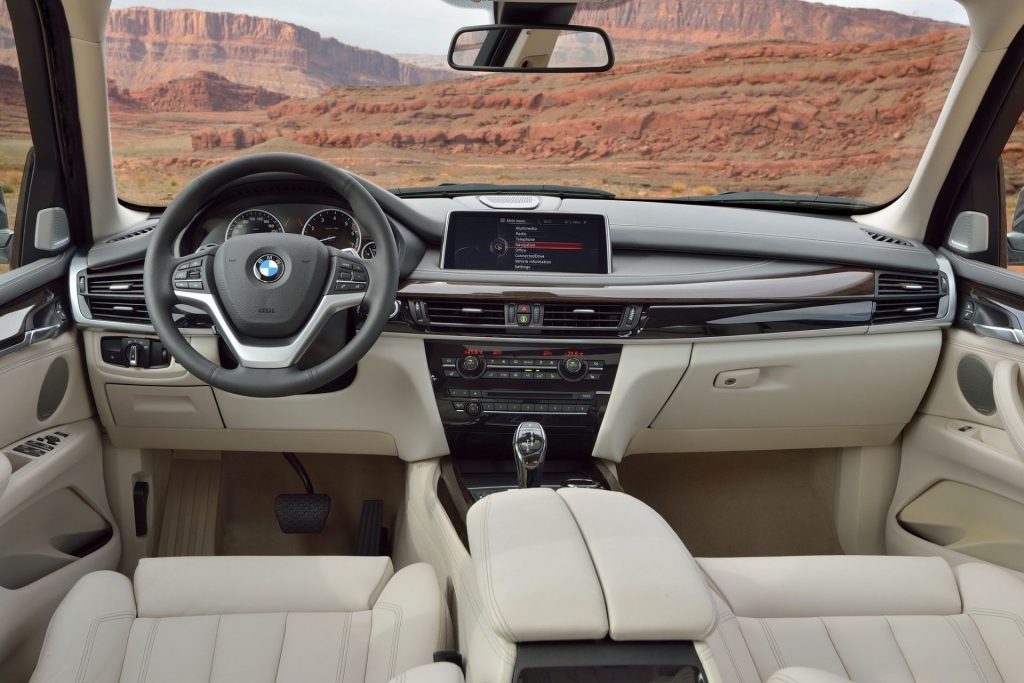
Engines of the BMW X5 F15
When the BMW X5 F15 cars were initially launched, they ran on three engines, and when production started in Kaliningrad, three more were added.
The base cars are equipped with four-cylinder, inline, direct-injection turbodiesel engines, with 218 horsepower. They also feature 16-valve timing gear. The cars can accelerate in 8.2 sec/100 km, with a top speed of 220 km/h, consuming 5.9 liters.
The xDrive30d variants, with 3.0-liter, six-cylinder units, have a power output of 249 horsepower. These engines were in production before this model, hence they were enhanced for it. Fuel injection pressure was increased, and their weight was reduced. The constructions received modernized turbochargers, along with accumulator injections and piezoelectric injectors. This has improved the cars' dynamics. They accelerate in 6.9 seconds, with a top speed of 230 km/h.
Important! To enhance power characteristics, chip tuning can be used with reprogramming, which can provide 300 hp. Although in the owners' comments, they mention 320 horsepower after tuning — downpipe installation.
Fuel consumption stands at 6.2 l/100 km. Issues with ticking noises under the hoods may arise. In such cases, it is necessary to check the hydraulic lifters, which may not function properly due to poor quality oil. It could also be related to timing chains, leading to unusual noises in the rear engine sections.
Important! It is recommended to use 6.5 liters of oil for filling the engines.
In the BMW X5 m50d F15 cars, the same engines are used, but with triple turbocharging. They deliver 381 horsepower, consume 5.3 l/100 km. Mixed driving cycles require 6.7 liters of diesel.
The xDrive40d cars are paired with 3.0-liter, six-cylinder turbocharged engines with direct injections. They produce 313 hp, with a top limit of 236 km/h. The cars accelerate in 6.1 sec/100 km. The consumption stands at 6.4 l/100 km in mixed driving cycles.
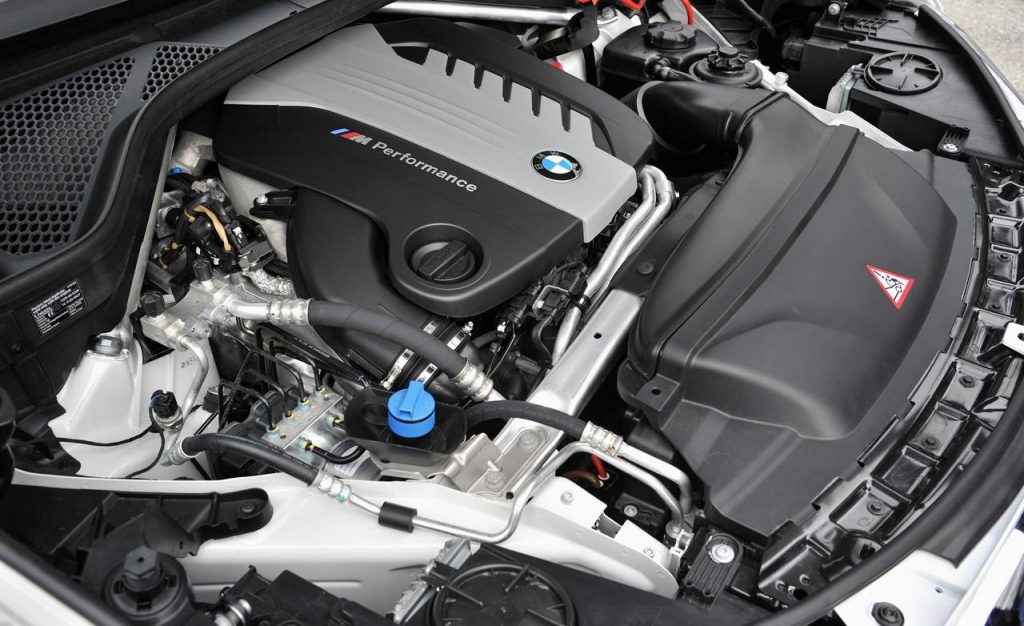
The domestic market offers:
- The gasoline xDrive 35i models with six-cylinder, three-liter engines, producing 306 hp. They feature 24-valve timing gears, direct injections, and turbocharging. They start in 6.5 sec/100 km, with a top speed of 235 km/h and consumption of 8.5 liters.
- The xDrive50i cars with eight-cylinder V-shaped four-point-four-liter engines, delivering 450 hp. They come with direct fuel injections, variable valve control systems, and Twin Scroll turbochargers. They have a top speed of 250 km/h, starting in 5.0 sec/100 km. They consume 10.4 liters.
- The hybrid versions of the BMW X5 eDrive work with 2.0-liter engines. They produce 313 hp, with acceleration in 6.8 sec/100 km and a top speed of 210 km/h. In mixed cycles, the consumption is 3.4 liters.
The engines comply with Euro 6 standards. They work with oils 0W30, 0W40, 5W30, 5W40, which need to be refilled in volumes of 5.2 — 8.5 liters. They should be changed every 8 — 10 thousand km or once a year.
Technological Components
The engines work excellently with eight-speed automatic transmissions. They have undergone some changes:
- in management programs,
- their weight has been reduced;
- friction losses of components have decreased.
